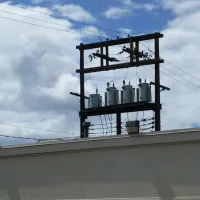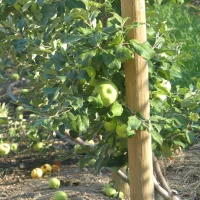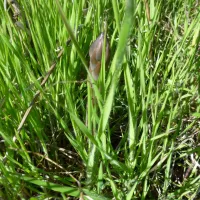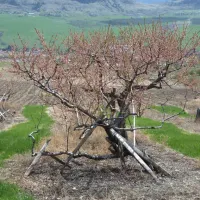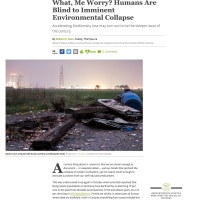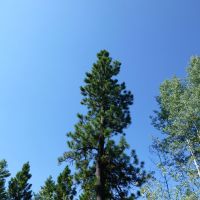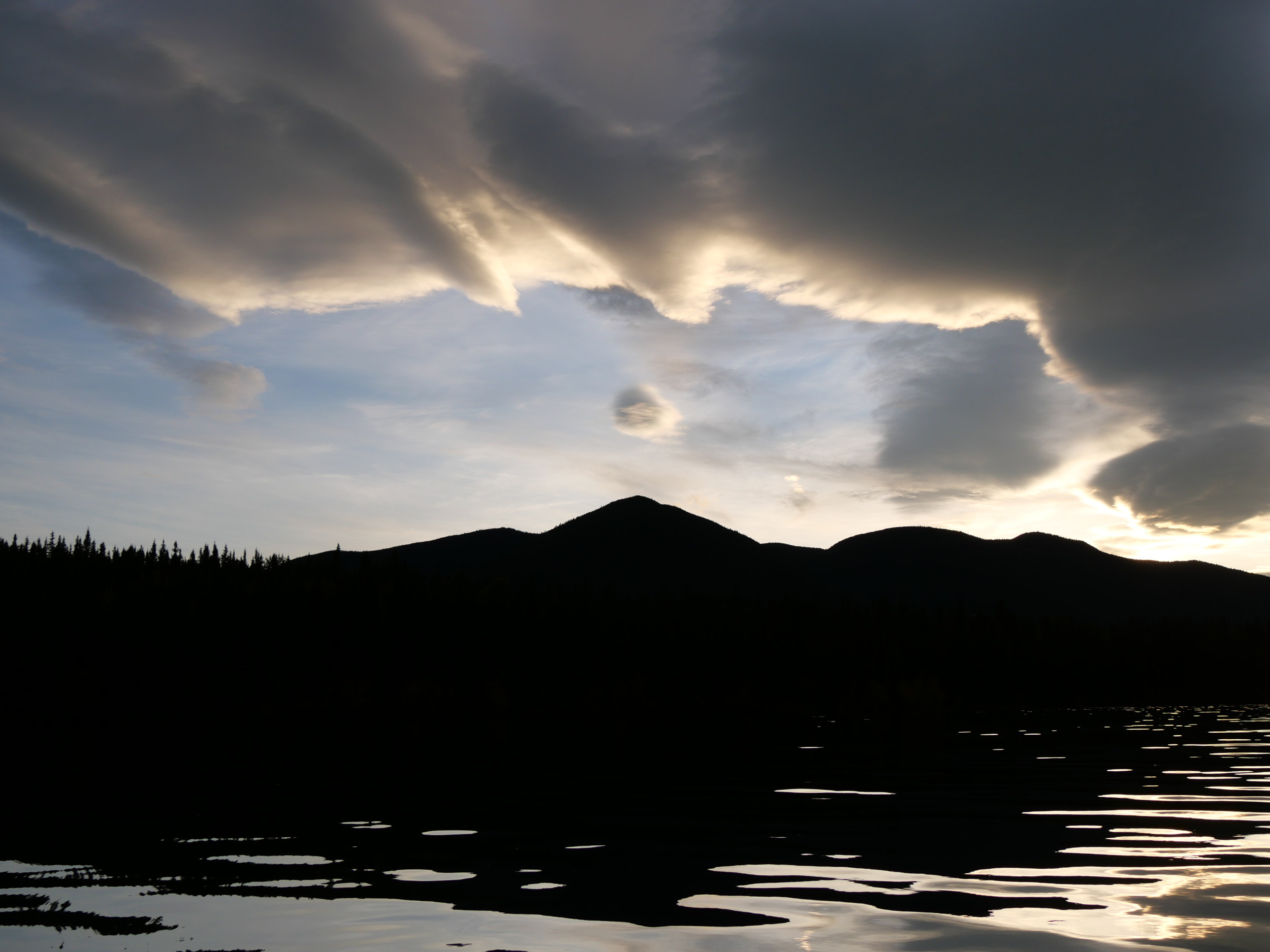Rocks aren’t all born alike. Here’s one from an old glacial river running along the ice that once filled this valley. Note what a light snowfall has done here. The stone has caught snow and laid it in a deep layer beside itself, resistant to the heating of the sun, which cleared the gravel around it. The afternoon sun then heated the stone enough to drop half the snow in a ring below the stone, then the southwest sun melted the snow around the base of the stone, while leaving the cap of snow on top of the stone, out of the direct rays of the sun, protected for another day’s melt. These are simple things, but fascinating.
Now look at a different stone! This one has not been cut away from the old riverbed by erosion yet, although the erosion has started the process. It will probably be sitting on top of the slope in three or four years. In its case, the sun has melted the snow from its cap, while leaving the snow at its sides untouched. For some reason, in other words, the sun has the opposite effect on it that it did on the stone above, presumably because as a surrounding medium the Earth has a different temperature than air, and the stone is actually radiating the earth’s temperature into the air, while the stone above is absorbing the sun’s temperature to drop snow on the Earth.
That’s pretty much a night and day scenario, representing how the Earth reacts to the Sun in open space. The relationship is so intimate, and so intertwined, that it takes place at the level of stones laid down 11,000 years ago in a small valley in a plateau inland from the sea. The image below shows a variety of these old riverbed stones, in both processes.
A few observations here. First, there’s a third state to these rocks, which is that the action of water (not rapid spring melt but slow freeze and thaw cycles in the winter, the very ones that have bared these stones and influenced their collection of snow and heat) have eroded what was a smooth slope even five years ago into a series of rapidly-deepening channels, depositing the stones at the bottom. There, collected in a group, they are doing pretty well at gathering enough heat together as a group to nearly melt the snow away completely, flake by flake as it falls, increasing the speed and volume of the flow that is carrying them away from the slope. They are, quite literally, using the heat of the sun to travel to the core of the Earth, or as much as they can while being deflected by the mass of the Earth below them. This is not, however, just a story of Earth and Sun. It is also a story of water. The image below shows how the freezing and thawing of a trail that caught enough water from the slope above it to remain open through most of the winter’s snow is lifting the Earth above the level of the stones, providing openings, and then burying the stones.
So think of that: one object (a stone), placed in three separate relationships to air and water, is able to manipulate its environment in seven useful ways. It rises, it sinks, it moves, it sheds water in very specific patterns, it melts snow flake by flake, it plants seeds, and it even radiates the Earth’s heat to space, without melting water. Any technology that harvested even one of those properties would be very useful. One that can do all of them at once would be a game changer. Sure, they are small effects here, but electronic technology also relies on tiny effects, so that should not stand between us and innovation. Until then, let’s all take a moment to honour rocks.
Categories: Atmosphere, Earth, Erosion, Grasslands, green technology, Innovation, Nature Photography, Soil, Sun, Water

